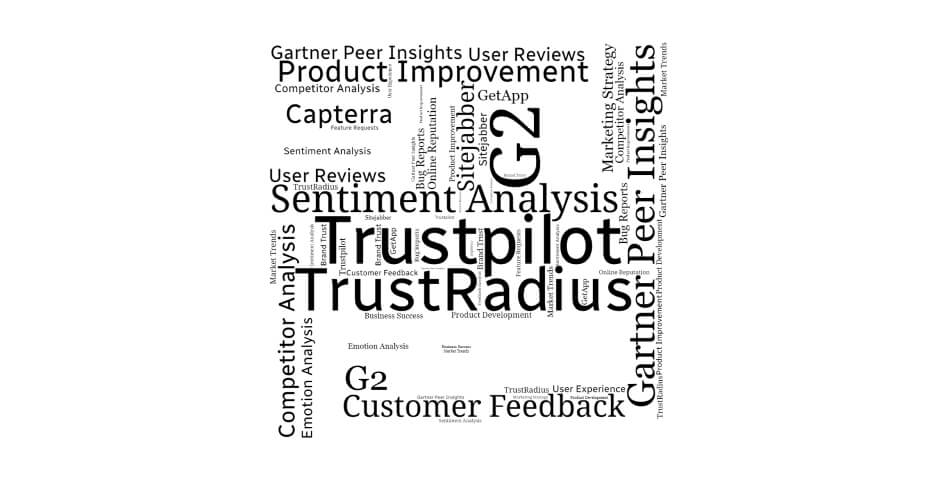Unlock Sentiment Analysis Power: Know Your Customers Better
- Emma Bennett
- 11 Jul, 2024

Businesses in the modern digital age must continuously understand their customer base. One very effective manner of going about this is through sentiment analysis. Sentiment analysis taps from refined algorithms and natural language processes to allow businesses to understand the expressed feelings and opinions of their customers. The following essay addresses the impact of sentiment analysis, its use in particular social media, for example, Twitter, Instagram, and Facebook, and some essential concepts relevant to it, namely, sentiment detection, sentiment mining, and sentiment classifiers.
What Is Sentiment Analysis?
The methods used in deriving emotions from the text are generally referred to as sentiment analysis or otherwise opinion mining. This can be either positive, negative, or neutral. Typically, the crudest aim of sentiment analysis is to derive subjective information from texts that will help in understanding the feelings and opinions concerning their clients.
Key Concepts in Sentiment Analysis
- Sentiment Detection: It is the process of finding the sentiments expressed in a text.
- Sentiment Mining: It is a process where subjective information needs to be extracted from a massive volume of textual data.
- Sentiment Classifier: This is a tool or an algorithm which is used to classify the sentiment from a text based on categories like positive, negative, and neutral.
Importance of Sentiment Analysis
Understanding customer sentiment is crucial for several reasons:
- Enhanced Customer Experience: Leveraging the voice of the customer as an opportunity for a business to find out areas of improvement and thus improve its product or redesign its service.
- Brand Management: The sentiment analysis helps to manage the brand reputation, gauging public perception, and even tries to reverse negative feedback.
- Market Research: Provides insight into customer preference and trends.
- Customer Engagement: Establishing the ability of businesses to relate better with customers in search of long-term relationships based on loyalty and satisfaction.
Sentiment Analysis of Social Media Platforms
It is beyond any doubt that social media platforms are overloaded with the opinions and emotions of customers. Sentiment analysis is the process of ascertaining the feelings in social media data.
Twitter Sentiment Analysis
With a large user base and real-time sentiments, Twitter, by its very nature, fits the bill for sentiment analysis. Most such tweets are impulsive and direct reflections of feelings attached to their handle. This kind of analysis can keep track of public opinion on the products, services, or even general brand of any business.
-
Hashtag Tracking: This enables you to gain a perspective on what the public has in mind regarding hashtags associated with your brand or campaign.
-
Trend Monitoring: From finding on-trend topics to understanding the sentiments around them, one will be informed about the public’s way of speaking.
Instagram Sentiment Analysis
Instagram is a photo, video, and story sharing platform. Sentiment analysis over Instagram infers a user’s emotion from an image’s captions, comments, and hashtags.
- Visual Sentiment Analysis: This is an analysis of the sentiment conveyed through various images and video data with a computer vision technique.
- Comment Analysis: This gives an analysis of the comments put by users for multiple posts, evaluating the public reaction and sentiment towards the post.
Facebook Sentiment Analysis
Facebook is the largest social network in the world and, therefore, one of the wealthiest sources to look to find a sentiment from available feedback about a service or product. Sentiment about processing posts, comments, and reactions provides insight into user feelings.
- User Post Analysis: To check the sentiment of the posts and shared content.
- Reaction Analysis: This helps analyze the sentiment behind the various reactions given to a post and comments.
Sentiment Analysis Implementation
Sentiment analysis requires implementation in stages, from data collection to sentiment classification. Here is how it works:
- Data Collection: The first step would involve collecting data from multiple sources, including social media sites, reviews, surveys, feedback forms, etc. This will be the corpus, which will go through analysis to produce a sentiment analysis.
- Preprocessing: Text data is characterized by too much noise, where numerous unrelated pieces of information are contained in the text, along with spelling and grammatical errors. Preprocessing generally aims at cleaning the data and making it ready for the actual analysis to be performed using the steps below:
- Tokenization: Dividing text into a sequence of single words or phrases.
- Stop Word Removal: Elimination of common words that do not contribute much to the sentiment (“and,” “the,” for example).
- Stemming and Lemmatization: Reducing words to their “stem form.”
Classic Sentiment Analysis vs. Generative AI
Classic Techniques
Generally speaking, sentiment analysis has traditionally been approached using the following techniques:
- Lexicon-Based Approaches: Predefined dictionaries of words annotated with sentiment scores.
- Machine Learning Models: Models employing algorithms such as Naive Bayes, Support Vector Machines (SVM), and Random Forests trained on labeled datasets.
These, more often than not, were successful but especially failed in nuances like sarcasm, context-specific meanings, and evolving language trends.
Generative AI
The coming of generative AI, like that from GPT-4, redefines sentiment analysis through:
- Contextual Understanding: The model can analyze the sentiment considering the whole paragraph, unlike other techniques that do so at the word or sentence level.
- Handling Nuances: Can interpret sarcasm, irony, and complex emotional tones more effectively.
- Adaptability: Continuously learning from new data and adapting to changing language patterns.
Tools Leveraging Generative AI for Sentiment Analysis
Several tools are using Generative AI that help develop advanced sentiment analysis:
- OpenAI GPT-4: This tool allows deep contextual analysis for more sensitive detection of sentiments, even in complex texts.
- Hugging Face Transformers: It supports several numbers of pre-trained models that users can fine-tune to do sentiment analysis.
- Google Cloud Natural Language API: This uses advanced artificial intelligence to achieve highly accurate and scalable sentiment understanding.
- IBM Watson Natural Language Understanding: This platform uses AI to provide advanced sentiment analysis, considering context and language intricacies.
Improvements Brought by Generative AI
- Enhanced Accuracy: Generative AI models can better grasp and decode the context of either a dialogue or text, making them achieve better levels of accuracy in determining sentiments.
- Real-time Sentiment Analysis: The efficiency of Gen AI permits real-time sentiment analysis for businesses to be nimble in responding to customer feedback and market trends.
- Multi-Language Support: The models have, in general, been trained on vast datasets represented in multiple languages, making them capable of performing sentiment analysis across different languages with similar accuracy levels.
- Emotion and Sarcasm Detection: This has been one of the most significant advancements to which Gen AI is capable of detecting emotion and sarcasm. However, it was tough for earlier approaches. It consequently leads to an in-depth understanding of sentiment.
- Customization and Fine-tuning: Generative AI allows better customization and fine-tuning of models for the various industries or use cases that will fit sentiment analysis with disparate needs across sectors.
Run Powerful Sentiment Analysis with Benty
With Benty, you can run sentiment analysis by pasting customer feedback, call transcripts, survey data, or by uploading documents in various formats. You can use predefined sentiment categories like Positive, Neutral, and Negative, or create your own categories. Additionally, users can customize their reports by selecting specific sections to include, such as summary statistics and charts, key insights, time series analysis, influential words, sentiment breakdown by category, and recommendations.
To stay informed about the launch of Benty and be among the first users, please leave your email address, and we will notify you when Benty is live 🚀
Conclusion
Sentiment analysis is a powerful tool to understand the emotions and views of customers. Business applications that can incorporate sentiment detection, sentiment mining, and sentiment classifiers can draw customer insights from social media sentiment analysis across Twitter, Instagram, and Facebook platforms. At least it should be providing an eye on the current public opinion for businesses to be more proactive in bettering the customer experience. This way, with the advancement in sentiment analysis technology, companies will aptly find solutions. to customers. It is a way that the companies would be able to surpass trends and address challenges in unlocking the potential of sentiment analysis while driving satisfaction, improving reputation, and ensuring a route to long-term success for brands.


